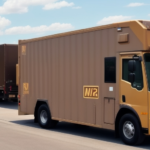Why Calculating Shipping Rates is Important for Your Shopify Store
Shipping rates can make or break a sale on your Shopify store. Properly calculating shipping rates provides your customers with accurate and reasonable shipping prices, which can significantly affect your business's reputation and profitability. Offering competitive shipping rates can help you increase sales, attract more customers, and create loyal customers by offering a transparent and straightforward shipping process.
Moreover, calculating shipping rates can also help you optimize your shipping strategy. By analyzing shipping data, you can identify areas where you can reduce shipping costs, such as by negotiating better rates with carriers or optimizing your packaging. This can help you increase your profit margins and make your business more efficient.
Another benefit of calculating shipping rates is that it can help you avoid unexpected shipping costs. By accurately calculating shipping rates, you can ensure that you are not undercharging or overcharging your customers for shipping. This can help you avoid disputes with customers and maintain a positive relationship with them.
Understanding UPS Shipping Zones and Their Impact on Rates
UPS shipping rates are determined by multiple factors, including the distance and the weight of the package being shipped. The distance of the shipment can be broken down into UPS's shipping zones, which are determined by the origin and destination postal codes. Understanding which zone your shipment falls under can help you accurately calculate your shipping rates.
It's important to note that UPS updates their shipping zones annually, so it's crucial to stay up-to-date on any changes that may affect your shipping rates. Additionally, certain factors such as fuel surcharges and delivery area surcharges can also impact your overall shipping costs. By understanding all of these factors and regularly reviewing your shipping rates, you can ensure that you are getting the best possible pricing for your shipments.
Factors Affecting UPS Shipping Rates for Shopify Stores
Several factors can affect UPS shipping rates, including the package's size and dimensions, destination, and shipping speed. The larger the package, the higher the shipping rate, due to its weight and volume. Similarly, shipping to farther destinations may come with higher shipping costs, and selecting faster shipping options may increase the shipping fee.
Another factor that can affect UPS shipping rates is the type of item being shipped. Some items may require special handling or packaging, which can increase the shipping cost. Additionally, the value of the item being shipped may also impact the shipping rate, as higher value items may require additional insurance or security measures during transit.
How to Set Up UPS Shipping in Your Shopify Store
Setting up UPS shipping in your Shopify store is a breeze. Follow these steps:
- Navigate to the Shipping and Delivery settings in your Shopify admin page.
- Select Add shipping zone, and enter the necessary details, including your shipping origin and the countries you plan to ship to.
- Select Add shipping method and choose UPS from the list of available carriers.
- Enter your UPS account number to benefit from any negotiated rates.
- Specify the service type and package type for the shipment.
- Enter the package weight and dimensions accurately.
- Enter the destination postal code.
- Click Save to get the calculated shipping rates for your UPS shipment.
It's important to note that UPS shipping rates are calculated based on the weight and dimensions of your products, as well as the destination and shipping speed selected by the customer. To ensure accurate shipping rates, make sure to enter the correct weight and dimensions for each product in your store. You can also offer customers the option to choose from different UPS shipping speeds, such as Ground, 2-Day, or Overnight, to give them more control over their delivery timeline.
Step-by-Step Guide on Calculating UPS Shipping Rates for Shopify Stores
To calculate UPS shipping rates in your Shopify store, follow these steps:
- Log in to your Shopify admin page and go to your Shipping and Delivery settings.
- Choose the shipping profile you want to add the UPS shipping method to.
- Click Add shipping method, then select UPS from the available carriers.
- Enter your UPS account number to benefit from any negotiated rates.
- Specify the service type and package type for the shipment.
- Enter the package weight and dimensions accurately.
- Enter the destination postal code.
- Click Save to get the calculated shipping rates for your UPS shipment.
It is important to note that UPS shipping rates may vary depending on the destination, package weight, and dimensions. Therefore, it is recommended to double-check the accuracy of the information entered to ensure the correct shipping rates are calculated.
Additionally, Shopify store owners can take advantage of UPS's shipping insurance options to protect their packages during transit. This can provide peace of mind and protect against any potential losses or damages that may occur during shipping.
Tips to Reduce Shipping Costs for Your Shopify Store with UPS
UPS offers several ways to reduce shipping costs for your Shopify store, including:
- Negotiating Rates: Negotiate rates based on your shipping volume.
- Off-Peak Shipping: Ship during off-peak periods to take advantage of lower rates.
- Carbon-Neutral Shipping: Opt for UPS's carbon-neutral shipping option to reduce environmental impact and benefit from promotional discounts.
- Smart Pickup Service: Use UPS's Smart Pickup service to automatically schedule pickups for your packages, eliminating the need to drop them off at a UPS location.
- Optimized Packaging: Choose the right packaging to reduce the weight and size of your packages, which can lower shipping rates.
Additionally, UPS offers a variety of packaging options, including free packaging for certain services, such as UPS Express Saver. Choosing the right packaging can help you save on shipping costs by reducing the weight and size of your packages, which can lower the shipping rates.
Comparing UPS Shipping Rates with Other Delivery Options for Shopify Stores
Shopify stores have several delivery options to choose from, each with its own benefits and drawbacks. Comparing UPS shipping rates with other carriers, such as USPS, FedEx, and DHL, can help you make an informed decision and choose the best option for your business's needs.
When comparing shipping rates, consider the following factors:
- Package Size and Weight: UPS may offer competitive rates for larger and heavier packages, while USPS may be more cost-effective for smaller and lighter items.
- Delivery Speed: FedEx and DHL may offer faster delivery options for international shipments.
- Destination: Consider the distance your packages need to travel.
- Customer Service: UPS is known for its reliable tracking and delivery notifications, while USPS may have more affordable options for returns and package pickups.
It's important to weigh the pros and cons of each carrier's customer service offerings to ensure a positive experience for your customers.
How to Handle International Shipments with UPS in Your Shopify Store
UPS offers various services for international shipping, including different shipping speeds, handling customs clearance, and providing tracking and delivery confirmation. To enable international shipping in your Shopify store:
- Navigate to the Shipping and Delivery settings.
- Choose a shipping zone that includes the countries you plan to ship to.
- Select UPS as your shipping carrier and configure the international shipping options.
It is important to note that international shipments may be subject to additional fees and taxes, such as customs duties and value-added taxes (VAT). These fees are typically the responsibility of the recipient and can vary depending on the destination country and the value of the shipment. To avoid any surprises, it is recommended to inform your customers about these potential fees and taxes before they place their order. You can also consider offering a shipping option that includes these fees upfront, so your customers can have a hassle-free experience.
Common Mistakes to Avoid When Calculating UPS Shipping Rates for Shopify Stores
Some common mistakes to avoid when calculating UPS shipping rates in your Shopify store include:
- Incorrect Measurements: Ensure you measure and weigh your packages correctly.
- Accurate Destination Addresses: Provide precise destination addresses to avoid delays and additional fees.
- Negotiated Rates: Enable your negotiated rates in your Shopify settings to benefit from discounted shipping rates.
- Dimensional Weight: Do not overlook the dimensional weight of your packages. Measure both the weight and dimensions to ensure accurate shipping rates.
Best Practices for Managing and Tracking Your UPS Shipments in Shopify
Properly managing and tracking your UPS shipments in Shopify can help you maintain customer trust and efficiently handle any issues that may arise. Follow these best practices:
- Provide Accurate Tracking Information: Always ensure that you provide accurate tracking information to your customers.
- Use Barcode Scanners: Utilize barcode scanners to scan tracking numbers directly from shipping labels to prevent errors.
- Communicate Proactively: Inform your customers about any potential delays or issues with their shipments promptly.
Providing timely updates and addressing any concerns can help maintain a positive customer experience and prevent negative reviews or feedback.
How to Offer Free or Flat Rate Shipping Using UPS in Your Shopify Store
You can offer free or flat-rate shipping in your Shopify store by creating price-based or weight-based shipping profiles and choosing UPS as the carrier. Here’s how:
- Free Shipping: Set a price threshold above which shipping will be free. For example, offer free shipping on orders over $50.
- Flat-Rate Shipping: Set a fixed amount for shipping regardless of the order price or weight. This provides simplicity and predictability for both you and your customers.
To implement these options:
- Go to your Shopify admin and navigate to Shipping and Delivery settings.
- Select the shipping profile you want to edit.
- Add a new shipping method and choose UPS as the carrier.
- Configure the pricing rules for free or flat-rate shipping based on your strategy.
- Save your settings to apply the changes to your store.
Understanding Additional Fees and Surcharges in UPS Shipping Rates
UPS shipping rates may come with additional fees and surcharges, including:
- Fuel Surcharges: Additional costs related to fuel pricing fluctuations.
- Residential Delivery Surcharges: Extra fees for deliveries to residential addresses.
- Address Correction Fees: Charges for correcting incomplete or inaccurate addresses.
Understanding these fees and how they contribute to your shipping rates can help you plan your shipping costs efficiently. Make sure to factor in these additional costs when calculating your overall shipping expenses to maintain your profit margins.
How to Optimize Your Packaging Strategy to Get the Best UPS Shipping Rates
Your packaging strategy can significantly affect your shipping rates. Here are some tips to optimize your packaging:
- Use Smaller and Lighter Packages: Opt for the smallest possible packaging that still adequately protects your products.
- Choose Appropriate Packaging Materials: Use materials that provide protection without adding unnecessary weight or volume.
- Correctly Measure and Weigh Packages: Ensure that each package's dimensions and weight are accurate to avoid unexpected shipping costs.
- Optimize Package Types: Select the right package type for your products to maximize space efficiency.
By implementing these strategies, you can reduce the weight and size of your packages, which can lead to lower shipping rates from UPS.
In conclusion, calculating UPS shipping rates for your Shopify store can be straightforward with a little guidance. Understanding the factors that affect shipping costs and following the recommended practices can help you offer accurate and reasonable shipping rates, attract customers, and increase your business's profitability.




















